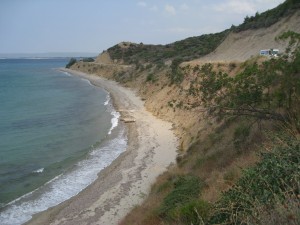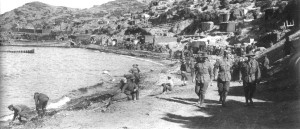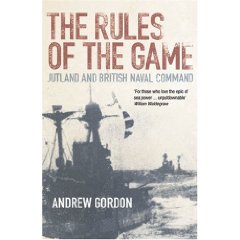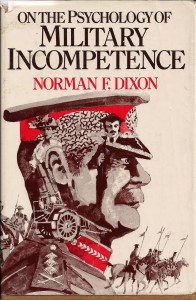
Above is a picture I took looking down on Anzac Cove in Gallipoli during my recent trip to Gallipoli. The Aussies and New Zealanders assaulted a beach that is about 25 meters wide and 600 meters long. After crossing the tiny beach, they hit a slope rising at about 60 degrees or more, covered by dense Mediterranean maqui. Bear in mind, the road in my picture did not exist and the first major summit was probably 700-800 feet high, but to get there, you had to cross a labyrinth of steep, irregular ravines, covered with the dense prickly undergrowth. Moreover, it is the wrong beach. [Continued below.]
The Brits intended to send the Anzacs into a beach about 500-1000 meters south, but the Royal Navy missed it and dumped them here. Once the Anzacs got ashore here, their leaders decided to stay and waste good soldiers in futile assaults between April and December of 1915. Their only luxury was to swim off the beach, which they did during all but the most intense artillery bombardments. The troops were withdrawn in January, 1916. About all that was positive about this wretched operation was that (1) it was the making Mustafa Kemal (Ataturk) and is regarded proudly by Turks as the first step in the struggle to create modern Turkey and (2) it was the making of the national characters of Australia and New Zealand. The Turks have built a moving museum that is pretty much dedicated to the bravery of the Anzac soldiers and junior officers (but not the Allied generals) they faced on this bloody battlefield. Below is a 1915 picture taken from almost the same spot, except from beach level.
Some things are really stupid and this attack ranks near the top in terms of strategic incompetence exhibited by the Pommies in WWI. Incidentally, Pommie is an anti British epithet that many Aussies and New Zealanders believe was coined by the Anzacs while they were being slaughtered pointlessly at Gallipoli)
Chuck Spinney
Mitilini, Nisos Lesvos, Greece

Phi Beta Iota Editorial Comment:
Norman Dixon wrote the book on The Psychology of Military Incompetence, and decades later Andrew Gordon wrote it again in Rules of the Game:Jutland and British Naval Command. Our military officers today are as a rule very smart and very loyal, but they confuse their Oath to the Constitution with an oath of blind loyalty that is itself a betrayal of the public trust. Looking at the two photos above, note the flat area to the left of the mistakenly selected objective. For the naval officer in command and for the ground officer in command, this is a no-brainer IF AND ONLY IF they do not confuse loyalty with professionalism.





